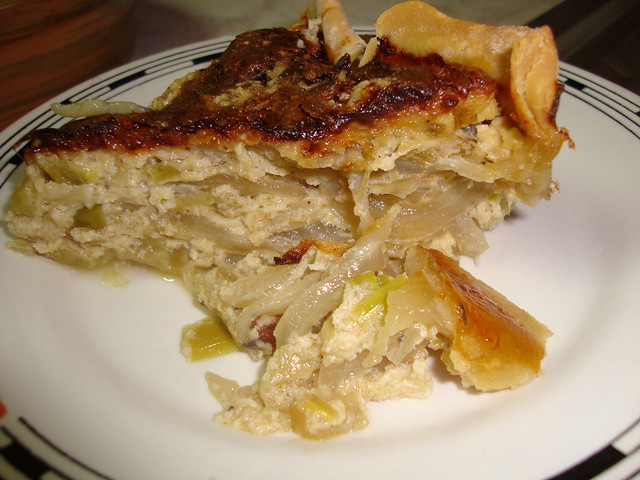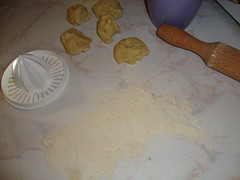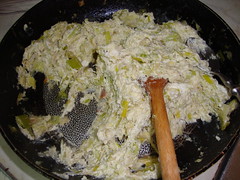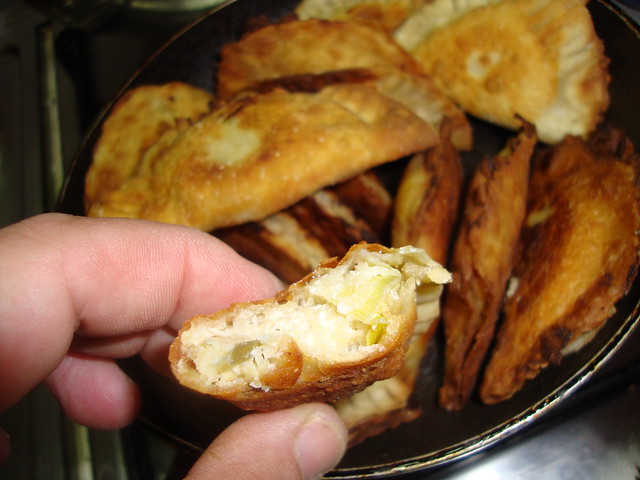Last night, as I was sifting through my fridge's darker corners, to see what was hiding, I found some leeks and red peppers that which did not look very worn out from having lain there for so long, but they really needed to get out of the fridge and into a cooking vessel. The result was a heavenly soup that I could never even have dreamed of if I didn't experiment. The recipe below is written in the same experimental way that I created this soup, based on my regular potato and leek soup.

You need:
500gr leeks (whole - I use both the white and green parts), washed well and chopped small
500gr potatoes, peeled and cubed (from a mountain dweller friend's bounty)
1 large onion, roughly chopped
3-5 red bell peppers (from our garden) chopped roughly
a few glugs of olive oil
a bouquet garni comprising of: celery stalk, thyme (or dill seeds) and 2 bay leaves (I also used bahari)
salt and pepper (I used peppercorns, but had to fish them out when I was ready to puree the soup)
Place all the ingredients in a large pot and let soften on the lowest heat setting for 30 minutes with no lid on the pot. Pour 4-5 glass of water into the pot (depending on how thick you want your soup) and let cook slowly for another 30 minutes. Switch off the element, allow the soup to cool slightly, remove whole herbs and spices and puree.

It's not a Greek custom to add cream and dairy products to soups. It's better to serve some cheese on the side to go with the soup. And if you like your meals a little heftier, fry some sausages. In this way, you can cater for vegans, vegetarians and omnivores alike, all with the same meal. And don't forget the bread and wine.
©All Rights Reserved/Organically cooked. No part of this blog may be reproduced and/or copied by any means without prior consent from Maria Verivaki.

500gr leeks (whole - I use both the white and green parts), washed well and chopped small
500gr potatoes, peeled and cubed (from a mountain dweller friend's bounty)
1 large onion, roughly chopped
3-5 red bell peppers (from our garden) chopped roughly
a few glugs of olive oil
a bouquet garni comprising of: celery stalk, thyme (or dill seeds) and 2 bay leaves (I also used bahari)
salt and pepper (I used peppercorns, but had to fish them out when I was ready to puree the soup)
Place all the ingredients in a large pot and let soften on the lowest heat setting for 30 minutes with no lid on the pot. Pour 4-5 glass of water into the pot (depending on how thick you want your soup) and let cook slowly for another 30 minutes. Switch off the element, allow the soup to cool slightly, remove whole herbs and spices and puree.

Wine from Peloponesos, sausages from Pilio, feta cheese from Plataies, local bakery bread and soup made from garden-grown produce: it can't get more Greek than this.
It's not a Greek custom to add cream and dairy products to soups. It's better to serve some cheese on the side to go with the soup. And if you like your meals a little heftier, fry some sausages. In this way, you can cater for vegans, vegetarians and omnivores alike, all with the same meal. And don't forget the bread and wine.
©All Rights Reserved/Organically cooked. No part of this blog may be reproduced and/or copied by any means without prior consent from Maria Verivaki.








